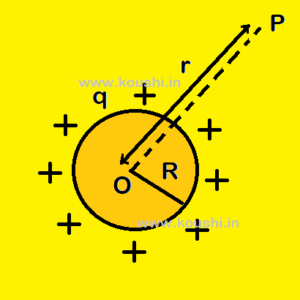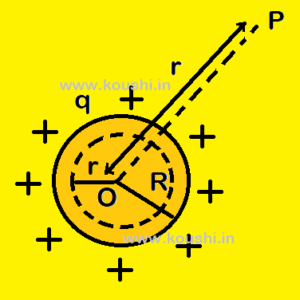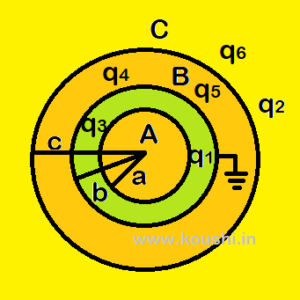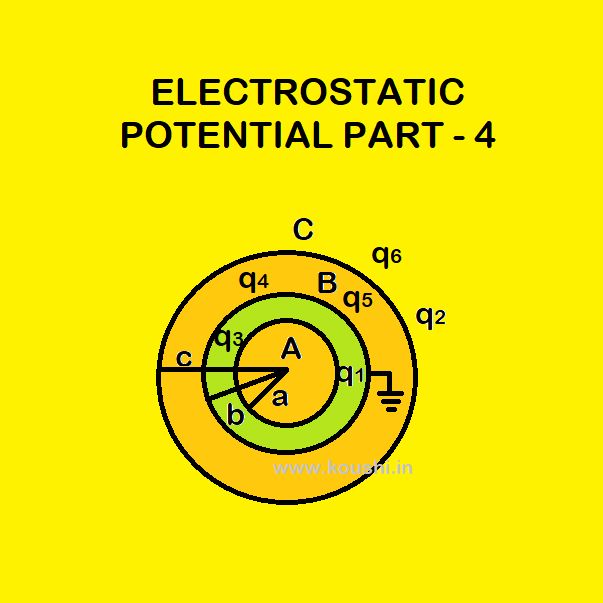1. Electric potential due to uniformly charged spherical shell: Let us consider a spherical shell of radius R is charged by q. Calculate electric field at a point P, at a distance r from the centre of the shell.
(i) If point P is outside the shell then potential at P is V = ![]() .
.
(ii) If point P is on the surface of shell then potential at P is V = ![]() .
.
(iii) If point P is inside the shell or at the centre of the shell then potential at P is V = ![]() .
.
[Inside the spherical shell E = 0, therefore, – ![]() =
= ![]() = 0 or, VS – V = 0
= 0 or, VS – V = 0 ![]() V = VS].
V = VS].

2. Electric potential due to uniformly charged solid sphere: Let us consider a solid sphere of radius R is charged by q. Calculate electric field at a point P, at a distance r from the centre of the sphere.
(i) If point P is outside the sphere then potential at P is V = ![]() .
.
(ii) If point P is on the surface of sphere then potential at P is V = ![]() .
.
(iii) If point P is inside the sphere then using Gauss’s law the electric field E = ![]() .
.
Now dV = -Edrcos00 = – ![]() dr or, V =
dr or, V = ![]() = –
= – ![]()
Or, V – ![]() = –
= – ![]() [r2 – R2]
[r2 – R2]
Or, V = ![]() [1 +
[1 + ![]() –
– ![]() ] =
] = ![]() [
[![]() –
– ![]() ].
].

3. Concept on potential due to shearing of charge: A solid sphere (A) of radius a is charged by q and its potential is VA = ![]() . Now the sphere is connected with a hollow sphere (B) of radius b using a conducting wire. Now the charge will reside on the outer surface of B [using Gauss’s law].
. Now the sphere is connected with a hollow sphere (B) of radius b using a conducting wire. Now the charge will reside on the outer surface of B [using Gauss’s law].
The potential of B is VB = ![]() . As the sphere A is inside the sphere B, now the potential of sphere A is
. As the sphere A is inside the sphere B, now the potential of sphere A is ![]() =
= ![]() =
= ![]() =
= ![]() VA.
VA.

4. Charge appears on different surfaces: Let us consider three spherical shells A, B and C of radii a, b and c respectively. Shell B is grounded and shell A and C are charged by q1 and q2.
As q1 charge remain on outer surface of shell A then no charge is on the inner surface of it.

Let q3 and q4 are the charge of inner and outer surface of shell B respectively. Using Gauss’s law through the material of B we get, q3 = – q1.
Let q5 and q6 are the charge of inner and outer surface of shell C. Using Gauss’s law through the material of C we get, q5 = – q4. So, q2 = q5 + q6.
As the potential of shell B is 0 then k[![]() +
+ ![]() +
+ ![]() ] = 0.
] = 0.
Using these conditions charge of different surfaces can be calculated.

Click the button to go to the previous part of this chapter.
